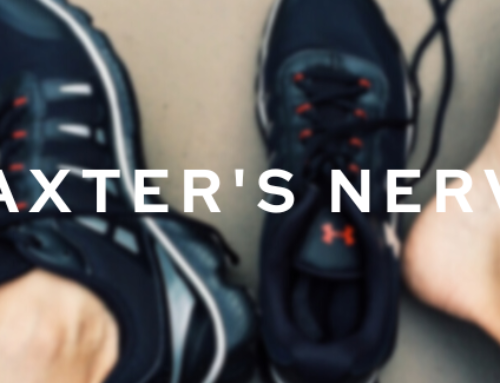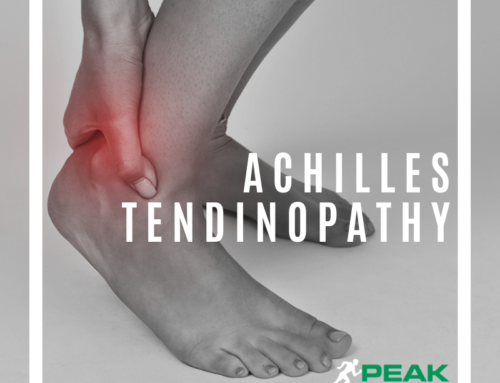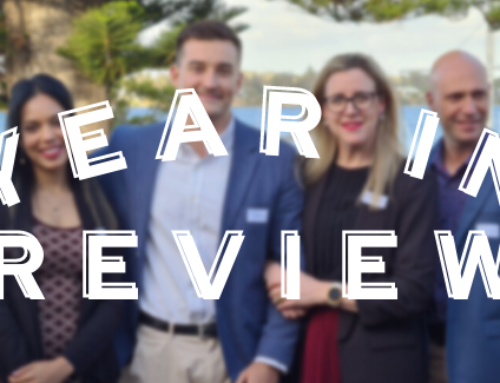PEAK PAGES
Welcome to another edition of “Peak Pages,” looking at the latest and greatest in the world of Peak Podiatry, biomechanics and sports podiatry.
It’s been a busy start to the year with many people ticking the box off the checklist of things to do – teeth, feet eyes etc. We’ve seen many enquiries of concerned parents about their children, be it aches and pains through to some extremely pronated feet, intoe, toe walking and awkward gait patterns. The warm weather combined with renewed enthusiasm and new year resolutions has also seen many injuries associated with a bit of the “too much too soon”!
Amongst this is an unprecedented number of people hitting the parks and pavements and enjoying their running. Screening and footwear assessments here at PEAK are paying dividends for such runners to ensure pain free and confident training
PEAK is proud to be the podiatry provider for a number of teams, with the Western Force well under way and West coast Fever looking for a big season this year. The Western Warriors have had some great team and individual performances and the Wildcats continue to dominate.
If you haven’t checked out our facebook page please do so by clicking here to keep up with our weekly activities and latest article links.
This issue:
Supporting a worth cause – Coast 2 Coast run – Marc Simpkins
New research in the next chapter of the barefoot running debate?
Athlete Profile – Lauren Shelley
Supporting a worthy cause.
Peak Podiatry has proudly been supporting and assisting the efforts of local runner Marc Simpkins in his quest to funds raise for the Cerebral Palsy Centre.
 “What started out as a far fetched dream, has developed into a dream come true. What makes the run special, above and beyond just finishing a run, is the fact that it can be used to help and support people who have cerebral palsy”, Mark says.
“What started out as a far fetched dream, has developed into a dream come true. What makes the run special, above and beyond just finishing a run, is the fact that it can be used to help and support people who have cerebral palsy”, Mark says.
Marc is planning to run from Albany to Cottesloe. Leaving Albany on the 16th of May Marc plans to cover the grueling 442km arriving at Cottesloe May 19th 2013.
Running such a distance is no mean “feet’ (pardon the pun) and has seen Marc present with a few niggles, concerns and footwear issues that we have been pleased to assist with. This photo was taken on 1/3/2013.
To follow Marc and to support his worthy cause go to www.coast2coastrun.org
Best of luck Marc.
New research in next chapter of the barefoot running debate?
 Below is an extract by Amy Burfoot that was published in Runners World January 10 2013
Below is an extract by Amy Burfoot that was published in Runners World January 10 2013
Three years ago, a Harvard team including evolutionary biologist Daniel Lieberman, Ph.D., published a paper in Nature showing a high percentage of forefoot striking among Kenyan runners, adults and adolescents, who had grown up barefoot. The paper led many to conclude that humans had evolved to be forefoot/midfoot runners, and not rearfoot runners.
Now a research group from George Washington University has conducted a similar analysis of another group of habitually barefoot Kenyans, and reached the opposite conclusion. Among 38 barefoot Daasanach tribe members from northern Kenya (19 men, 19 women), 72 percent landed on their rearfoot when running barefoot at a self-selected, comfortable pace.
The GWU team did confirm one central Lieberman finding. “Our data support the hypothesis that a forefoot strike reduces impact loading,” they wrote. Nonetheless, “the majority of subjects instead used a rearfoot strike at endurance running speeds.”
The GWU data also supported the notion that running speed affects landing. When their Daasanach subjects increased speed, they were more likely to land on the midfoot or forefoot. At the slowest speeds (9:00 to 13:24 per mile), 83 percent of runners landed on their rearfoot. At speeds faster than 5:21 per mile, this decreased to about 43 percent.
Many of Lieberman’s barefoot (and forefoot-striking) Kenyan subjects were running at sub-5:00/mile pace. By contrast, his “habitually barefoot” runningU.S.subjects averaged 6:52 pace. See the tables below for data from both studies.
The GWU team believe that many other factors could influence preferred running style. These include “training level, substrate mechanical properties [ie, running surface, hard or soft], running distance and running frequency.”
The question of running speed becomes important because, from an evolutionary perspective, it should answer this question: What running speed would have put the most calories on the dinner table? Did Paleo runners survive by going relatively long and slow, or with shorter, faster bursts? Little is known about this subject.
The Daasanach live on the northern reaches of Lake Turkana inKenya, borderingEthiopia andSudan. They are a small tribe with little or no running history. Lieberman’s study was conducted with Kalenjin runners in and aroundEldoret,Kenya, about 300 miles from the homeland of the Daasanach. Many ofKenya’s fastest, most famous runners come from the Kalenjin tribe.
GWU Study, 2013: Percent Rearfoot Strikers (All Barefoot)
| Rearfoot % | Speed, range (pace per mile) | |
| Daasanach | 83 | 8:56-13:24 |
| Daasanach | 68 | 6:42-8:56 |
| Daasanach | 73 | 5:21-6:42 |
| Daasanach | 43 | 4:28-5:21 |
Harvard Study, 2010: Percent Rearfoot Strikers (All Kenyans barefoot)
| Rearfoot % | Speed, average (pace per mile) | |
| Kenyan adults | 9 | 4:32 |
| Kenyan teens | 25 | 4:52 |
| U.S.barefoot | 12 | 6:52 |
| U.S.shod | 83 | 6:42 |
Athlete Profile – Lauren Shelley
 I started running cross country at primary school 25 years ago when I was 11 & have been going ever since! I was a late developer but improved a lot over 2003-2007 after linking up with my current coach / mentor, Jackie Fairweather (nee Gallagher), and finally made my first Australian team in 2005 for the World Half Marathon Championships. I had a few timely injuries & 2 knee surgeries between 2008 & 2011 – the positive that came out of all this is I became much better at managing my own niggles and preventing injuries – and this has led to improved performances more recently.
I started running cross country at primary school 25 years ago when I was 11 & have been going ever since! I was a late developer but improved a lot over 2003-2007 after linking up with my current coach / mentor, Jackie Fairweather (nee Gallagher), and finally made my first Australian team in 2005 for the World Half Marathon Championships. I had a few timely injuries & 2 knee surgeries between 2008 & 2011 – the positive that came out of all this is I became much better at managing my own niggles and preventing injuries – and this has led to improved performances more recently.
I had a fantastic year in 2012, running three marathons all under 2:38. In October I won the Melbourne Marathon & Australian Marathon Championships, and in doing so secured a spot in the Australian team for the 2013 World Athletics Championships in Moscow (my first Australian team in 7 years). So my current focus revolves around preparing for Moscow in August this year.
Most memorable run? 2006 Commonwealth Games inMelbourne & finishing on the hallowed turf at the MCG … an honor to be part of a such a memorable race & as part of my first major Australian team.
Favourite run in Perth? Running through King’s Park at sunset.
Favourite distance? The marathon – it an be an incredibly frustrating event, but worth all the effort when you really nail one!
Toughest race/ run? Any morning run after a hard interval session the night before … the faster you push yourself in the session, the harder you fall the next day! Especially once you’re over 30.
Favourite pre race food? No superstitions for the main meal, but crepes (my dad’s special recipe) for dessert are a favourite!
Any pre race habits? As a sports physiotherapist I have developed an extensive self massage routine using my foam roller, spiky ball, posture pro etc (what us physios have to do to treat ourselves). I estimate it’s worth 40sec over 10km!
Any running idols? Steve Moneghetti was doing well on the world stage when I was in grade 6 & just getting into running. Over the years I’ve had the honour of doing a few runs with him at Falls Creek and talking marathons & training philosophies, which has been awesome.
Fvaourite Shoes? Asics SkySpeed
Sponsor? Asics







Leave A Comment